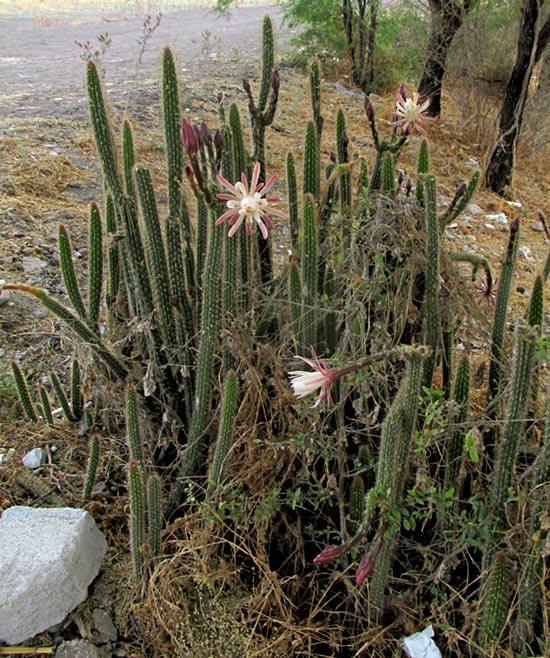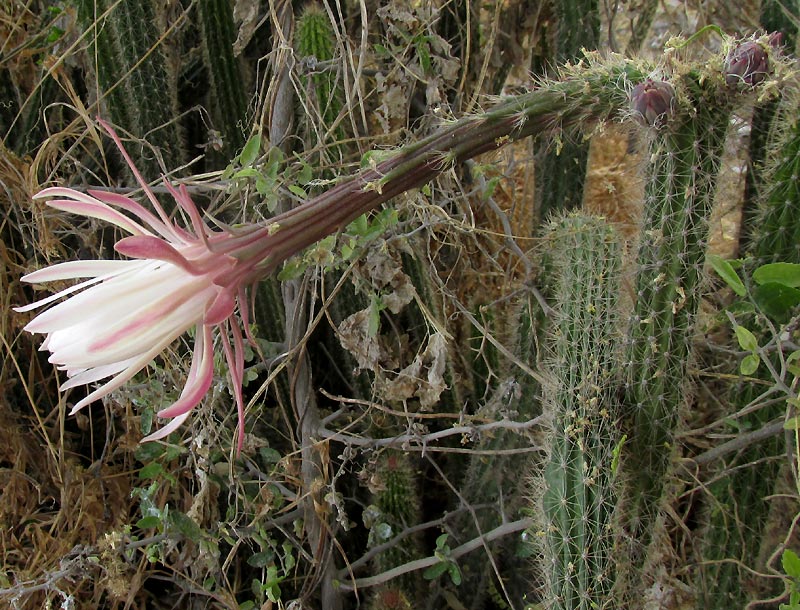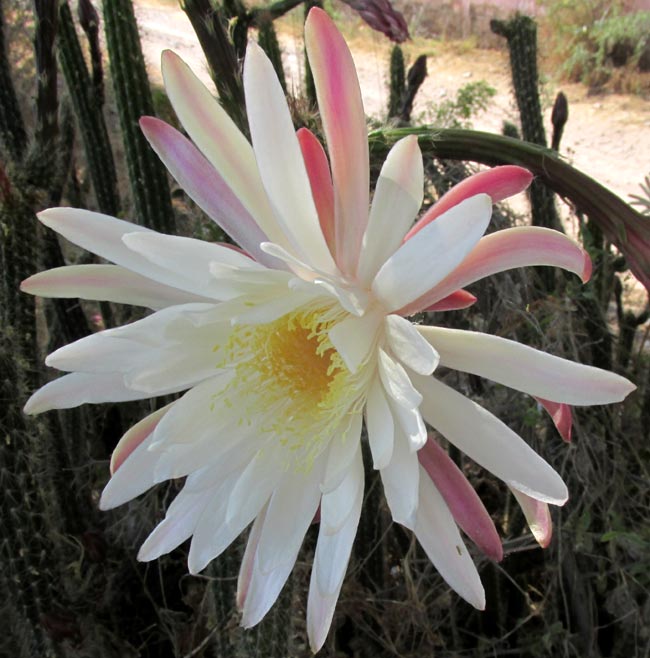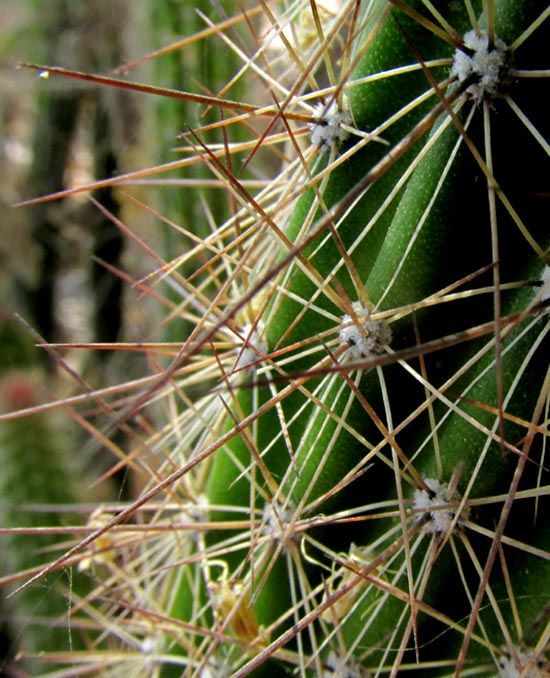Excerpts from Jim Conrad's
Naturalist Newsletter
entry dated April 22, 2022, issued from near Tequisquiapan, elevation about 1,900m (6200 ft), ~N20.57°, ~ W99.89°, Querétaro state, MÉXICO
SNAKE CACTUS FLOWERING

At the end of the dry season, with no rain yet this year, the above cactus was flowering. It's on a dam that during the rainy season forms a reservoir, but since February has been completely dry. One assumes that someone planted it there, despite it being in an awkward spot, a trashy place few people see, which during the rainy season is overgrown with vines.

The flowers are about 25cm long (10 inches), as shown above. Below you see that the open blossom produces a pretty effect:

On the stems, clusters of short spines are arranged atop maybe 12-14 narrow ribs. The spines radiate from areoles covered with short, white hairs:

In English the most commonly used name for this species seems to be Snake Cactus, based on its binomial, PENIOCEREUS SERPENTINUS. Other names include Mexican Night-blooming Cereus and Queen of the Night, the latter name shared with many species in various plant families, species which bloom in the night and maybe smell good. One reason the cactus bears so many English names is that often worldwide it's grown in gardens and as potted plants. Gardeners think of it as a low-maintenance, fast-growing species which produces side shoots vigorously, and can be propagated easily from cuttings. At first the stems stand upright, but they can reach 4 meters in length (13 ft), so eventually they fall over unless somehow supported.
It's such a popular ornamental that special cultivars have been developed, such as the form cristata, whose stem tips grow in unpredictable directions, creating a ball of contorted stem looking like a writhing, spiny snake.
One reason our population is doing so well is that it's growing in its homeland. The species is endemic just to Mexico's arid uplands from the northwest mountains south to Oaxaca, occupying tropical deciduous forests at 1100-2300m in elevation (3600-7600 feet). The Flora del Bajío reports that sometimes in our region it escapes from cultivation.
In this area, in the heart of its natural distribution, I've not seen it anywhere except on the dam. I suspect that all wild plants have long been dug up, first by local homeowners, then finished off by professional cactus thieves who appear to be very active here. Just recently I found dug-up a large population of mammillarias I'd been hoping to see bloom.